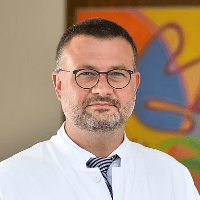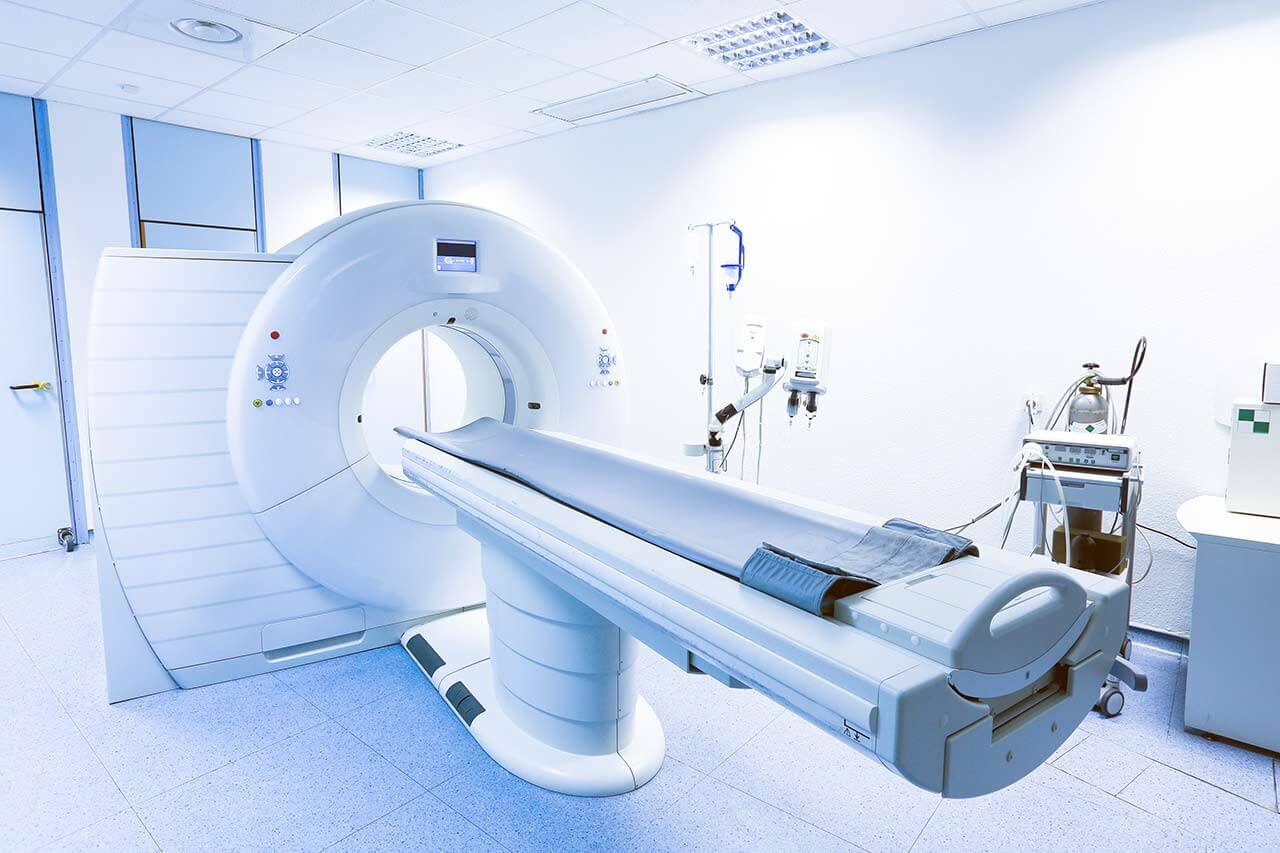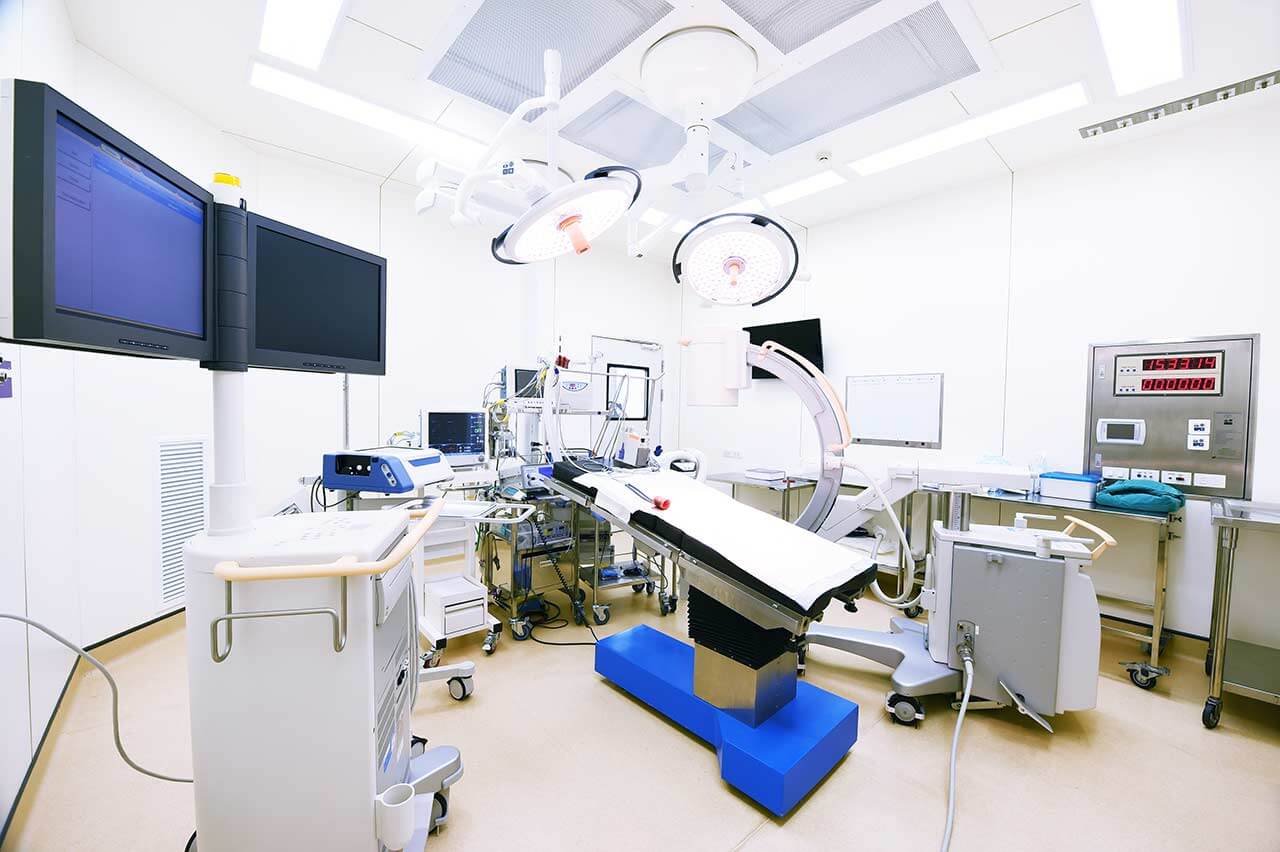
The program includes:
- Initial presentation in the clinic
- clinical history taking
- review of medical records
- physical examination
- x-ray examination of the foot
- CT/MRI (if clinically indicated, additional cost is 650/1200€)
- nursing services
- consultation of related specialists
- treatment by chief physician and all leading experts
- explanation of individual treatment plan
- written statement
Required documents
- Medical records
- X-ray examination, MRI/CT scan (if available)
Service
You may also book:
 BookingHealth Price from:
BookingHealth Price from:
About the department
The Department of Adult and Pediatric Trauma Surgery, Orthopedic Surgery at the University Hospital Erlangen offers the full range of surgical and conservative treatment methods for musculoskeletal diseases and injuries. The department is a supraregional Trauma Center in Central Franconia. About 250 seriously injured patients receive medical care here every year. The department's specialists also annually admit more than 3,500 patients for inpatient treatment and provide outpatient care for about 25,000 patients. The department is recognized as one of the 10 largest and leading medical facilities specializing in the treatment of polytrauma in Germany. Its specialization also includes highly qualified medical care for patients with sports injuries. In addition, the department provides treatment for bone fractures, spinal fractures and polytrauma in children. The department successfully performs knee, hip, shoulder and elbow replacement surgery, including revision interventions to replace previously implanted prostheses. The surgeons of the medical facility have a perfect command of arthroscopic techniques and use them in the treatment of musculoskeletal diseases. The department is distinguished by its successful experience in spinal surgery (in cooperation with neurosurgeons) and interventions on the pelvic bones, as well as in septic surgery. The department is headed by Prof. Dr. med. Mario Perl.
The department admits patients with various hard and soft tissue injuries, polytrauma. Patients can receive both surgical and conservative treatment of all types of fractures, undergo reconstructive surgery for complex joint fractures, treatment of the consequences of accidents, pseudoarthrosis, etc. The department's specialists use the most advanced surgical techniques and materials in their work. If the patient requires surgical treatment, preference is given to sparing minimally invasive interventions. When performing surgical interventions, surgeons widely use intraoperative 3D imaging systems for improving the view of the operating field and controlling surgical manipulations, which minimizes the risk of damage to large blood vessels and nerve endings. The department's doctors have particular experience in the treatment of injuries in elderly patients, including osteoporotic fractures of the pelvis, femoral neck and hip. An equally important priority focus of the department's traumatologists is the treatment of injuries and bone fractures in children and adolescents. The department's pediatric traumatologists work according to the principle "Children are not young adults, they require special treatment methods and a special medical approach". When treating injuries in children, it is necessary to take into account the characteristics of the growing skeleton in order to ensure the further proper development of the child. Bone fractures in children heal faster than in adults, so conservative therapy is often sufficient in such cases.
The department enjoys an excellent reputation in replacement surgery of the large joints: knee, hip, shoulder and elbow. The medical facility has passed the EndoCert® certification procedure of the German Society for Orthopaedics and Orthopaedic Surgery (DGOOC), which today is also regularly re-confirmed by a group of external experts. This means that all treatment measures (from the very first consultation to the examination after the completion of rehabilitation) are carried out in accordance with well-structured and established protocols with proven effectiveness. Moreover, the individual situation of each patient is always taken into account, and in especially difficult cases, specialists from all necessary medical fields are involved in the treatment. The modern surgical range is complemented by high quality physiotherapy, orthopedic technology and social services.
Conventional indications for joint replacement surgery are severe degenerative changes, including age-related joint degeneration, and sustained injuries (fracture, femoral head necrosis, etc.). The department uses the very latest materials and surgical techniques, including progressive navigation systems, which make it possible to ensure the most accurate placement of the prosthesis, restore the patient's mobility and enable the patient to return to sports. The department's specialists select prostheses exclusively on an individual basis, since the treatment success directly depends on the optimal choice of an artificial joint. In some cases, a custom-made prosthesis is required. After joint replacement surgery, patients receive a basic set of rehabilitation measures to facilitate recovery and a faster return to their normal lifestyle.
Arthroscopic interventions on all large joints (shoulder, elbow, hip, knee, ankle) are also within the competence of the department's doctors. The specialists successfully perform arthroscopic interventions to repair damage to the cartilage tissue, rotator cuff, ankle joint, articular lip, meniscus, perform cruciate ligament replacement and cartilage transplantation, as well as provide effective treatment for sports and industrial injuries, bone and soft tissue tumors. As a rule, such interventions are performed using high-resolution MRI and modern intraoperative imaging. The specialists strive to perform minimally traumatic surgical treatment with the formation of a surgical access through one or several small skin incisions 2-3 cm long. A miniature camera and surgical instruments are inserted through small tissue incisions into the joint cavity. The advantages of this approach include mild postoperative pain, minimal risk of damage to adjacent tissues and structures, faster healing of postoperative wounds, and a short hospital stay.
It should be noted that the department's specialists carry out all therapeutic procedures and surgical interventions in accordance with the requirements of the Bavarian State Medical Association. Thus, the results of surgical treatment in the medical facility are distinguished by an extremely low level of mortality and postoperative complications, such as impaired wound healing or infections. To maintain the highest level of medical support, each department's employee regularly makes one or another contribution to the development and optimization of clinical processes.
The department's range of medical services includes:
- Traumatology
- Provision of primary medical care for polytrauma and follow-up care for such patients
- Conservative and surgical treatment of all traumatic injuries and fractures of the skeleton (except for hand and head)
- Reconstructive interventions for complex joint fractures
- Conservative and surgical treatment of long-term consequences of injuries (for example, improper bone fusion, pseudoarthrosis)
- Conservative and surgical treatment of injuries of any severity in elderly patients
- Skeletal bone injuries (except for hand and head)
- Osteoporotic pelvic fractures in old age
- Fractures of the femoral neck and adjacent anatomical structures
- Fractures of previously implanted endoprostheses or osteosynthesis devices
- Conservative and surgical treatment of injuries in children and adolescents
- Skeletal bone injuries (except for hand and head)
- Vertebral fractures
- Pelvic fractures
- Multiple trauma
- Orthopedic surgery
- Joint replacement surgery
- Hip replacement surgery for degenerative changes (coxarthrosis) in old age or after previous injuries (femoral head necrosis, femoral neck fractures), including revision (secondary) replacement surgery
- Knee replacement surgery for degenerative changes (gonarthrosis) in old age or after previous injuries
- Shoulder replacement surgery for degenerative changes (omarthrosis) in old age or after previous injuries
- Elbow replacement surgery in old age or after previous injuries
- Treatment of bone fractures in patients with previously implanted hip, knee, shoulder, and elbow prostheses (periprosthetic fractures)
- Surgery for joint infections
- Joint replacement surgery for sports injuries, occupational injuries, bone and soft tissue tumors
- Arthroscopic surgery
- Arthroscopic surgery after previous knee injuries (for example, meniscus injury, cruciate ligament injury, articular cartilage injury)
- Arthroscopic surgery after shoulder injuries (for example, rotator cuff injuries, articular lip injuries after shoulder dislocation, impingement syndrome)
- Arthroscopic surgery after ankle injuries (for example, in case of cartilage damage, adhesions)
- Arthroscopic surgery after previous elbow injuries (for example, in case of adhesions, loose bodies in the joint)
- Septic surgery
- Treatment of acute and chronic bone infections
- Treatment of acute and chronic joint infections
- Treatment of acute and chronic infectious lesions of implanted endoprostheses
- Treatment of acute and chronic infectious lesions of implants
- Treatment of infections of the intervertebral space and adjacent vertebrae (spondylodiscitis)
- Spinal surgery (in collaboration with neurosurgeons)
- Surgical treatment of spinal injuries and diseases
- Spinal fractures (traumatic, pathological and osteoporotic fractures with a focus on the treatment of complex injuries of the cervical spine in elderly patients, spinal injuries with paraplegia symptoms)
- Spinal tumors and metastases
- Inflammatory spinal diseases (for example, spondylodiscitis, rheumatic spinal lesions)
- Degenerative spinal changes (for example, spinal disc herniation, spinal stenosis, spondylolisthesis)
- Conservative treatment of spinal injuries and diseases (facet block, lumbar nerve root block, epidural anesthesia, thermal denervation, pain therapy, physiotherapy)
- Surgical treatment of spinal injuries and diseases
- Conservative and surgical treatment of orthopedic and neuro-orthopedic diseases in children
- Joint replacement surgery
- Other therapeutic options
Curriculum vitae
Education
- 1994 - 2001 Study of Human Medicine at the University of Ulm.
- 2015 - 2017 Master of Healthcare Business Administration, University of Erlangen-Nuremberg.
Professional Career
- Since February 2019 Head of the Department of Adult and Pediatric Trauma Surgery, Orthopedic Surgery at the University Hospital Erlangen.
- Positions in the Academy of Trauma Surgery
- Since June 2015 Medical Director, ATCN Germany.
- Since March 2015 Head of ATLS courses.
- January 2013 - January 2016 Deputy Head of the Ausschuss Junges Forum.
- Since October 2012 Professor at the University of Ulm.
- September 2015 - December 2018 Managing Senior Physician at the Trauma Center Murnau.
- 2013 - 2015 Senior Physician, Traumatologist at the Trauma Center Murnau.
- 2006 - 2012 Traumatologist, University Hospital Ulm.
- 2004 - 2006 Internship, Brown University.
- 2002 - 2004 Work at the University Hospital Ulm.
Memberships in Professional Societies
- German Society of Traumatology (DGU).
- German Society of Orthopedics and Trauma Surgery (DGOU).
- AO Foundation.
Photo of the doctor: (c) Universitätsklinikum Erlangen
About hospital
According to the Focus magazine, University Hospital Erlangen ranks among the best medical facilities in Germany!
The hospital is one of the leading healthcare facilities in Bavaria and offers top-class medical care distinguished by the close intertwining of clinical activities with research and training of medical students. The hospital was founded in 1815 and today is proud of its rich traditions, numerous medical achievements and an excellent reputation not only in Germany, but also in the international arena. The hospital has 25 specialized departments, 7 institutes and 41 interdisciplinary centers, whose experts work tirelessly for the benefit of their patients.
The hospital has the status of a maximum care center, and therefore it represents almost all fields of modern medicine. Oncology, transplant medicine, and robot-assisted surgery are among the top priorities of the clinical activities of the medical complex. Oncology is represented by the Comprehensive Cancer Center Erlangen, which is one of 13 centers of excellence in Germany certified by the German Cancer Society. The university hospital has a high-tech center with high success rates for heart, liver, kidney, pancreas, cornea and bone marrow transplants. In addition, the hospital is a leader in the use of robot-assisted surgery. The medical facility has at its disposal innovative robotic technologies, in particular the da Vinci Surgical System, with the help of which surgeons perform many sparing interventions in various medical fields.
The medical team of the hospital consists of highly professional therapists, surgeons and nursing staff. The focus of their efforts is on the patient, his health and peace of mind, as well as comfort during treatment. The clinical practice of doctors is based on an individual approach to each case, which results in high treatment success rates. State-of-the-art technical equipment also plays an important role in the therapeutic process. The hospital is proud of the most advanced devices for imaging diagnostics (X-ray, ultrasound, CT, MRI, PET-CT, SPECT-CT, etc.), endoscopic examinations, laboratory tests, as well as specially equipped operating rooms for robot-assisted interventions, image-guided therapeutic manipulations, minimally invasive and classical surgeries of any complexity. Thus, the doctors of the university hospital have all the necessary resources to effectively treat the most severe pathologies and save lives.
The combination of high-tech equipment, experienced and highly qualified personnel, as well as strict adherence to the standards of modern medicine, form a solid foundation for the provision of the best medical care at the European level. An undeniable proof of the high prestige of the hospital is the constantly growing number of patients who come here from various regions of Germany and other countries of the world.
Photo: (с) depositphotos
Accommodation in hospital
Patients rooms
The patients of the University Hospital Erlangen live in comfortable rooms with light colors and modern design. Each patient room has an ensuite bathroom with shower and toilet. The furnishing of the patient room includes an automatically adjustable bed with an orthopedic mattress, a bedside table, a wardrobe, a table and chairs for receiving visitors, a TV, a radio and a telephone. Wi-Fi can be provided upon request. The use of a mobile phone is prohibited in many rooms of the hospital.
Patients can also live in enhanced-comfort rooms with a more sophisticated design. The enhanced-comfort rooms additionally include upholstered furniture, a minifridge and a safe.
Meals and Menus
The hospital offers healthy and tasty food distinguished by many awards, including the 1st place in the prestigious ESSEN PRO GESUNDHEIT competition of the Bavarian State Ministry of the Environment and Consumer Protection.
The patient and the accompanying person have three meals a day. Breakfast is served buffet style: scrambled eggs, boiled eggs, sausage, cheese, bread and buns with butter and jam, cereals, etc. There are three set menus for lunch and dinner to choose from: a classic menu featuring local cuisine dishes, a Mediterranean menu and a vegetarian menu.
If for some reason you do not eat all the foods, you will be offered an individual menu. Please inform the medical staff about your dietary preferences prior to the treatment.
The hospital also houses many cafeterias, which will delight with a wide range of delicious dishes and drinks.
Further details
Standard rooms include:
Religion
The hospital regularly hosts catholic and evangelical devine services. The services of representatives of other religions are available upon request.
Accompanying person
During an inpatient program, an accompanying person can stay with you in the patient room or in a hotel of your choice.
Hotel
During an outpatient program, you can stay in a hotel of your choice. The managers will help you choose the most suitable options.




